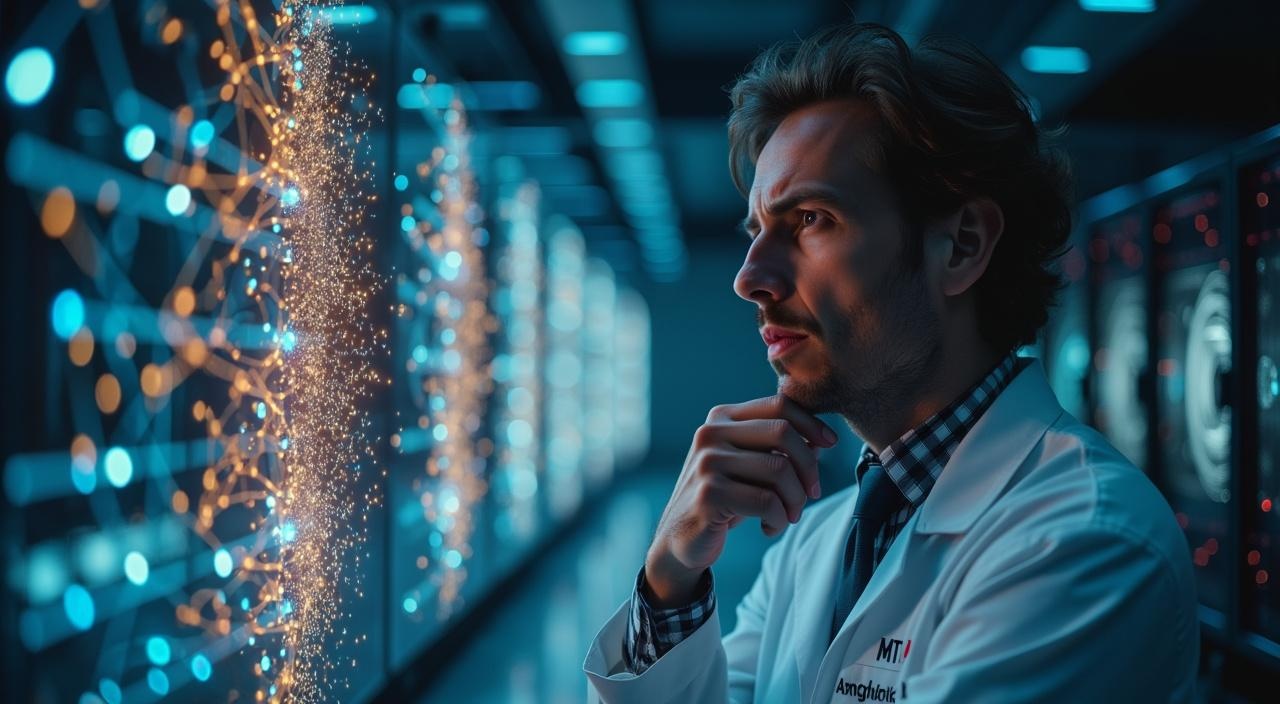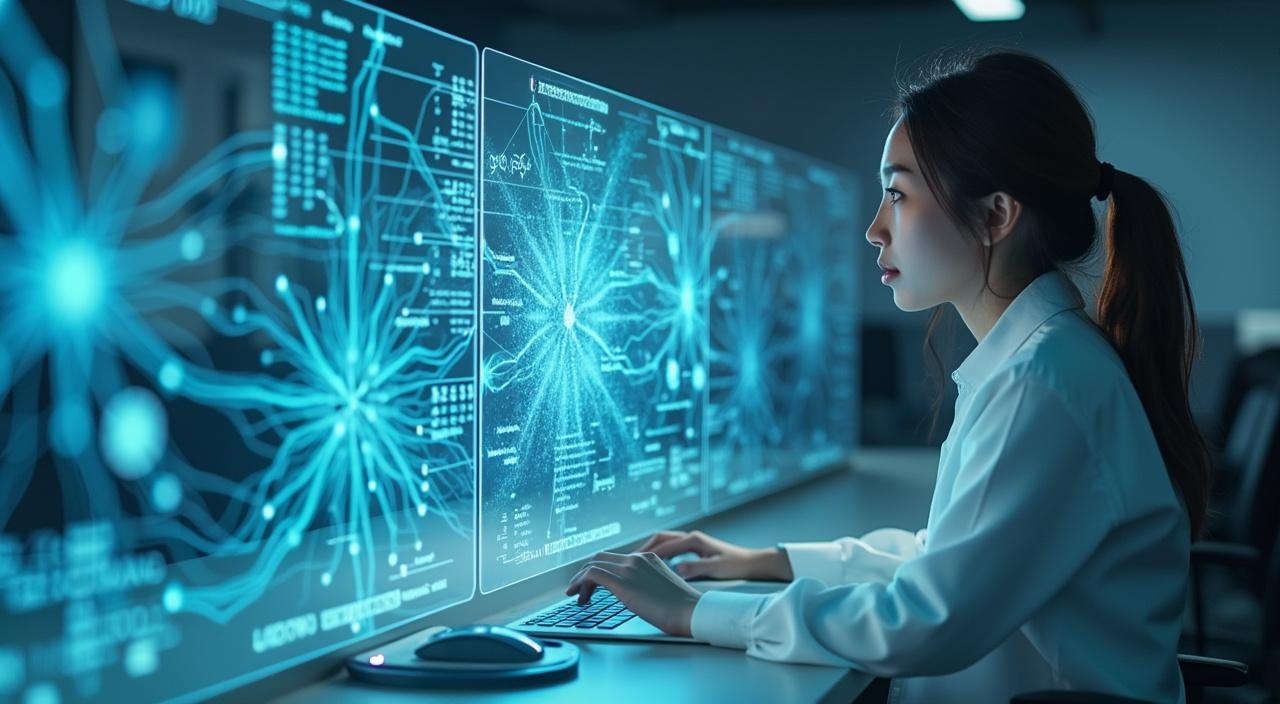MIT researchers have unveiled SEAL, a groundbreaking AI system capable of autonomously rewriting its own code to enhance task performance. This revolutionary approach marks a significant leap in artificial intelligence, enabling machines to adapt and improve their capabilities in real-time without traditional human intervention.
Key Takeaways:
- SEAL introduces a dual-loop architecture that allows AI to identify and implement self-improvements during task execution
- The system achieved a remarkable 72.5% accuracy on challenging benchmarks, dramatically outperforming traditional AI approaches
- Self-modification occurs through a precise mathematical formula that maintains system stability during code rewrites
- SEAL can transform problem-solving strategies by generating personalized solutions for previously unseen challenges
- The technology represents the first stable implementation of true AI self-modification, with potential applications across diverse domains
The Two-Loop System of Continuous Self-Improvement
SEAL operates through a revolutionary dual-loop architecture that breaks new ground in AI development. When the system encounters unfamiliar input contexts, it doesn’t just adapt—it literally rewrites portions of its own code through self-edits.
How SEAL Generates and Applies Self-Modifications
The brilliance lies in SEAL’s unified approach. The same model that identifies needed improvements also implements those changes. This creates a feedback loop where performance drives evolution. The system uses the ReST^EM algorithm to maintain stability during this continuous transformation process.
The Mathematical Foundation
SEAL’s supervised finetuning process follows a precise formula: θ’ ← SFT(θ, SE). This means the updated model parameters (θ’) result from applying supervised finetuning to the current parameters (θ) using generated self-edits (SE). This MIT breakthrough represents the first stable implementation of true AI self-modification.
The reinforcement learning loop ensures each self-edit improves performance rather than degrading it—solving the critical challenge that has plagued previous attempts at self-modifying AI systems.
Breakthrough Performance Across Challenging Tasks
SEAL’s results speak louder than any theoretical discussion. The AI system doesn’t just learn—it transforms itself into a better problem-solver with each challenge.
Knowledge Integration Shows Dramatic Improvements
The knowledge incorporation experiments reveal SEAL’s true power. Baseline question-answering systems struggled with a measly 32.7% accuracy. After SEAL ran two rounds of its self-improvement protocol, accuracy jumped to 47.0%. Even traditional continued pretraining with 200 passages only managed 43.8% performance—falling short of SEAL’s adaptive approach.
This isn’t incremental progress. SEAL fundamentally changes how AI systems acquire and integrate new information. While other methods hit plateaus, SEAL keeps pushing boundaries through its unique self-editing capabilities.
Few-Shot Learning Results Shatter Expectations
The ARC benchmark results tell an even more compelling story. Standard in-context learning produced zero percent accuracy—a complete failure. Test-time training with basic self-edits managed 20%, showing some promise but nothing groundbreaking.
SEAL’s trained framework achieved 72.5% accuracy on the same tasks. Let me repeat that: from 0% to 72.5% represents a quantum leap in AI capability.
These numbers matter because they demonstrate SEAL’s ability to tackle problems it’s never seen before. Traditional AI systems rely on massive datasets and extensive training. SEAL writes new code tailored to each specific challenge, creating personalized solutions that outperform generic approaches.
The implications extend far beyond academic benchmarks. SEAL proves that self-modifying AI can deliver practical results across diverse problem domains, setting the stage for more adaptive and capable AI systems.
The Critical Challenge of Catastrophic Forgetting
SEAL faces a brutal reality that could derail its revolutionary potential. Current AI systems often suffer from catastrophic forgetting – they lose previously learned skills when acquiring new ones. Picture learning to play piano, then completely forgetting how the moment you pick up a guitar.
SEAL’s current architecture lacks explicit memory retention mechanisms. When the system rewrites its own code to handle new tasks, it can inadvertently overwrite the neural pathways that stored earlier knowledge. This creates a dangerous cycle where each self-improvement potentially erases hard-won capabilities.
The Practical Deployment Roadblock
This limitation creates major barriers for real-world applications. Consider these scenarios where memory loss becomes problematic:
- A medical AI that forgets drug interaction patterns after learning new diagnostic procedures
- A financial analysis system that loses fraud detection skills while adapting to new market conditions
- A customer service bot that can’t remember product knowledge after training on new policies
Here’s the twist: Traditional AI systems solve this through careful training protocols and fixed architectures. SEAL’s self-modifying nature makes these standard approaches ineffective. The system needs to balance aggressive self-improvement with knowledge preservation.
I’ve seen this challenge firsthand in my work with adaptive AI systems. The temptation to continuously optimize often leads to throwing away valuable accumulated learning. AI agents that can’t maintain their core competencies while evolving become more liability than asset.
MIT researchers acknowledge this represents their biggest hurdle for practical continual learning deployment. Without solving catastrophic forgetting, SEAL remains a fascinating research project rather than a production-ready breakthrough.

The Future of Self-Adaptive AI Systems
SEAL marks a turning point in how we think about machine intelligence. This isn’t just another incremental improvement – it’s the first system that can genuinely rewrite itself to become better at whatever you throw at it.
The implications are staggering. Traditional AI models remain static after training, but SEAL can adapt in real-time during inference. Picture an AI that encounters a new problem, recognizes its limitations, and immediately patches its own code to handle the task better. What was once temporary reasoning becomes permanent capability.
Strange but true: We’re witnessing the birth of machines that don’t just learn – they evolve their own architecture. The research from MIT demonstrates how ephemeral problem-solving can transform into lasting improvements, creating a feedback loop of continuous enhancement.
But here’s the catch: This power demands unprecedented safeguards. Self-modifying code has historically been a programmer’s nightmare, and now we’re handing that capability to autonomous systems. Without robust protection mechanisms, we risk creating AI that optimizes itself into unintended behaviors.
This represents our first real glimpse of truly autonomous artificial intelligence.

A New Paradigm in Artificial Intelligence
MIT researchers have shattered the traditional boundaries of AI development with SEAL, a groundbreaking system that rewrites its own code to tackle new challenges. This isn’t your typical machine learning update.
Picture this: an AI that doesn’t wait for human programmers to improve it. SEAL transforms from a passive recipient of human instruction into an active architect of its own capabilities. The system analyzes its performance gaps and literally rewrites portions of its code to address weaknesses.
Here’s the twist: current implementation still demands careful human oversight and engineering precision. We’re not dealing with a fully autonomous system yet, but rather a supervised self-modification process that shows remarkable promise.
Strange but true: this approach suggests that self-adapting language models could become the standard for next-generation AI systems. The implications for how AI agents might change what it means to be human are staggering.
Sources:
• MIT Research: Groundbreaking framework developed by Adam Zweiger, Jyothish Pari, Han Guo, Ekin Akyürek, Yoon Kim, and Pulkit Agrawal








